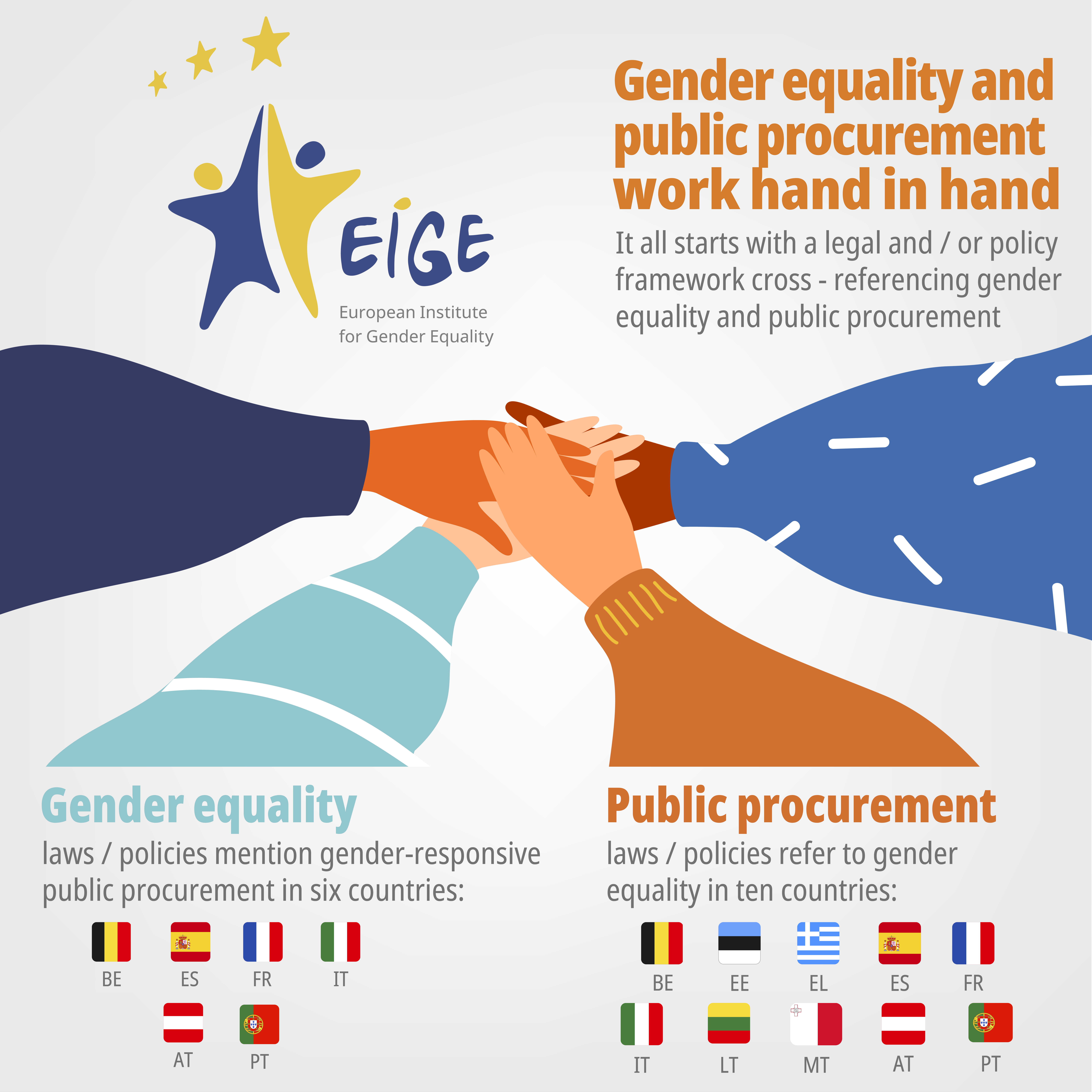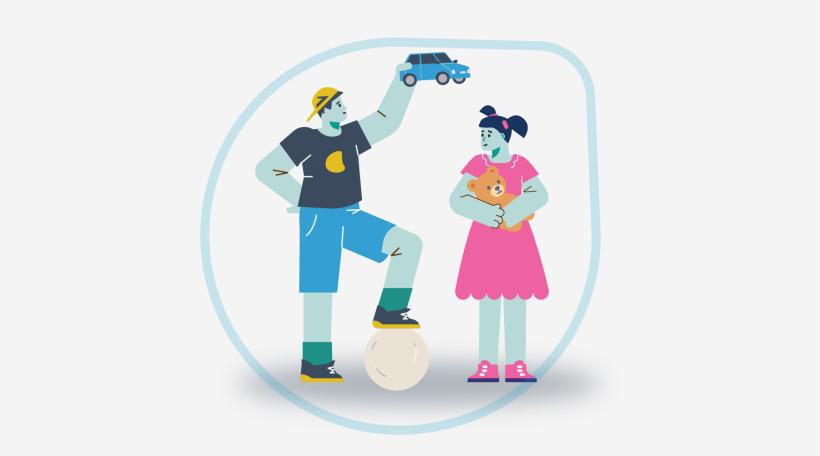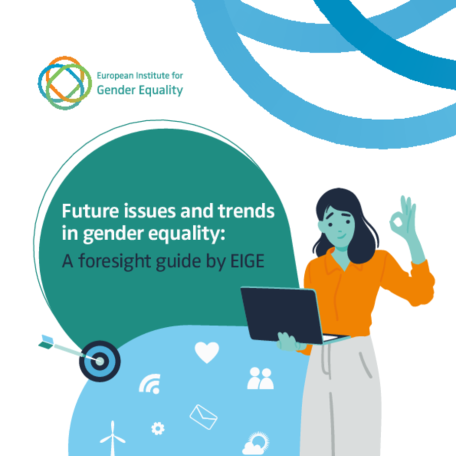Each year the EU spends 14% of its Gross Domestic Product (GDP) on public works, from building projects to social infrastructure. Imagine the possibilities for positive change if this was matched to wider policy goals.
Smart targeting of that €2 trillion in public funds and considering how it impacts the lives of both women and men is the essence of Gender-responsive public procurement, or GRPP.
“GRPP is an extension of gender mainstreaming,” says Jeroen Decuyper Aerts, Strategy and Policy Coordinator, Belgian Institute for the Equality of Women and Men.
Gender mainstreaming is about integrating a gender equality perspective at all stages of policy-making as well as all areas within policies and processes such as procurement or budgeting.
“When you develop any policy or project, you need to develop it for both women and men. It’s about the whole design. The whole concept. Not just about who is doing the work.
“You need to always consider the gender perspective: taking into account differences like situation, lifestyle, biology. Otherwise you may unconsciously exclude one group.
“Yes, sometimes the best person for the job is a woman. But more diverse teams, including both women and men, always bring more and better ideas to the table.”
Despite the obvious benefits of GRPP when paying for goods, services and public works, many policymakers remain unfamiliar with the approach.
EIGE’s data reveals that out of all 27 Member States, only 10 have provisions in their laws/policies at the national level related to GRPP. No GRPP measures or actions were identified in 12 Member States.
Therefore, costly mistakes are made.
Jeroen continues: “There was a gritty anti-drugs campaign in Belgium that used images of men with needles in their arms. It completely ignored the fact that in general women use more prescription drugs and anti-anxiety medication than men and are also less likely than men to inject when using hard drugs.
“As a result, the message that drugs are bad was completely lost on half of the population. When seeing those images women said, ‘It’s not a problem for me’.
“If they had used GRPP in this case it would have saved money. The outcome could easily have been gender sensitive and the campaign could have reached everyone.”
By using GRPP, government bodies can build fairness and sustainability into the system from the start. And it can help advance more ambitious policy aims beyond the project itself.
The benefit of this is simple: we all gain from better-functioning institutions that are more attuned to people’s realities. And in this way, public money is spent more efficiently.
“As a public buyer, you need to look at what’s the best way to serve your community,” says Anna Lupi, Legal and Policy Officer at DG GROW, the EU’s Department for Internal Market, Industry, Entrepreneurship and SMEs.
“Buying only based on price, or budget, or time, without trying to anticipate the wider needs is not behaving like a public authority.”
Anna, who leads the EU’s policy on socially responsible public procurement, believes the billions spent on public projects can positively influence the way we live and work.
She explains: “When consumers care about sustainability, they might avoid fast fashion. And the fact people want to buy sustainably pushes the market to act.
“What public buyers are doing is the same thing. With the additional responsibility, they should be there to care for big social issues, such as gender equality.
“Procurement accounts for 14% of EU GDP. So public buyers are significant market influencers—even if they don’t see themselves as such. They have the potential to shape the market.”
Anna says: “Public buyers that buy in a rush or only to save money aren’t practising what they preach. It’s not sticking to the principles they otherwise try to uphold.
“They should prepare the ground for contracts that deliver the best quality, serve the most purposes, and promote your policy goals. Otherwise, it becomes a democratic problem.”
EIGE offers a free GRPP toolkit to help public officials design and deliver contracts in a way that reduces gender inequalities. It delivers practical do-it-yourself advice on considering the gender perspective across the entire lifecycle of a procurement process.
Based on EIGE’s toolkit, Urbact – which supports cities in the EU to develop integrated practices – have created training modules to help European towns and cities implement GRPP at a local level.
Additionally, EIGE’s GRPP report features 11 Member State case studies as well as further analysis on the state-of-play of GRPP in the EU, and policy recommendations.
According to Statistics Poland, GRPP has helped a single contract “in terms of gender equality, because the contracting authority required equal remuneration for women and men for work of equal value and that women do not face discrimination in access to work and occupation.”
Anna Lupi’s #3StepsForward
- Politicians should integrate gender equality into every aspect of public administration. To ensure every diverse voice is heard.
- They must dedicate minimum resources to be effective. Equality doesn’t happen on its own. You need to invest time and money…and then have patience.
- Monitor and follow up on this. Otherwise, you cannot know if your solution has been effective.
Jeroen Decuyper Aerts’ #3StepsForward
- Policy-makers need to show more interest and political will to implement Gender-responsive public procurement.
- We should offer them more training and tools to help them realise the importance of GRPP.
- We should share best practice instead of hypothetical examples. If public bodies can see others are doing GRPP and making it work, they are more likely to act.




